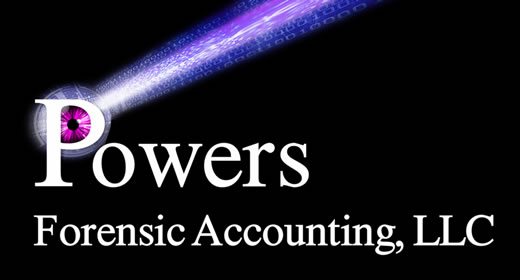Fraud Deterrence: Reduce the Risk of Fraud Before It Occurs – Part 1 Cash Receipts
By Chrissie A. Powers, CPA/CFF, CFE, CVA
I have received quite a few inquiries this last year regarding organizations interested in beefing up their internal controls. Powers Forensic Accounting, LLC is able to help safeguard your client's assets from fraud or employee abuse. Let's start by talking about one of the most common areas ripe for fraud, cash receipts.
The forms that businesses are receiving payments in are evolving. Today payments are received in the form of cash, checks, credit cards, ACH deposits, bitcoins and cryptocurrencies. For purposes of this article, I am going to focus on cash, checks and ACH deposits.
Secured Cash Processing via a Bank Safe
If your organization deals with lots of cash on hand one option is called Secured Cash Processing in which you drop the cash in an onsite safe that immediately credits your account at the drop.
Here is how the secured cash process works. Your bank provides an onsite safe at your selected locations. Your company employees drop the cash in the onsite safe. The onsite safe scans the bills and secures your cash. The smart safe automatically transmits a daily posting to your bank for credit to your account. An armored car regularly empties the onsite safe and makes a secured delivery to the bank vault. Upon arrival at the bank vault, a final reconciliation is performed.
Secured Cash Processing provides employee security by eliminating the risk to employees delivering the cash to the bank branch for deposit. It also provides detailed reporting at the employee, shift, store, and enterprise level. Your company receives a provisional credit for the cash in the safe prior to armored car pickup. The automation reduces human error; thus, a reduction in shrinkage and deposit errors.
Remote Check Deposit Machines
The days of sending an employee to the bank to make the daily deposit are over. Remote Check Deposit Machines allow you to deposit checks from the convenience of your office using a special desktop scanner. This method doesn't mitigate the use of your employees but reduces the risk and amount of time to travel to the bank. It allows your organization to establish a threshold with how much money is at the office and reduce the number of trips to the bank.
Lockbox Service
Is your company utilizing a lockbox to receive customer check payments? If no, then why not? By using a lockbox, you reduce the risk of an employee diverting the company funds. Lockboxes are a complete outsourcing of check receivables. Lockboxes can also help with cashflow as the funds are in your account sooner than an employee taking it to the bank to deposit or even using a remote deposit machine.
Here's how it works. A customer sends their payment to a PO Box. The post office delivers the payment to your bank's lockbox processing center. The deposit is credited to your business's bank account. A special zip code expedites delivery and crediting of the deposit. This complete outsourcing of receivables eliminates your employees handling checks. Your bank has a number of check images and multiple report forms available. It is even possible that the detailed documentation may interface with your accounting package.
Automated Clearing House (ACH) Deposits/Debits
Automated Clearing House (ACH) is an electronic funds transfer network regulated by NACHA that, with the proper authorization, allows your business to debit customer accounts for services. It improves productivity, saves time and money, and ACH allows your business to collect payments automatically and forecast cash flow. ACH origination in general can allow you to future date a file for debit ACH settlement.
Anyone who is initiating an ACH transaction must have a signed authorization form from the customer they are pulling funds from. Then the bank sets your company up with access to online ACH origination and you create a database with your bank in order to debit your customer as needed. Once this is set up, then the bank will send out the ACH through NACHA and deliver to your customer's bank. There are different types of ACH such as a normal ACH or a same day origination. Typically, a normal ACH is a one-day transaction that, for example, would originate on Tuesday and be there Wednesday. But now same day originations are becoming more frequent; however, they do have limitations such as a time cut off and $25,000 amount limitation. In addition, there is a price difference between a normal ACH and a same day origination.
It is important to note that ACH transactions are not final settlements. It could get pulled back so it is not a guarantee as your customer could recall the transaction.
Many fraud deterrent services are offered by your bank so be sure to check with your banker. If your client's organization would like to beef up internal controls or suspects fraud, Powers Forensic Accounting, LLC can assist. If you have additional questions or concerns regarding fraud detection and deterrence, don't hesitate to contact Chrissie A. Powers, CPA/CFF, CFE, CVA at 614.745.5192.

Chrissie A. Powers, CPA/CFF, CFE, CVA
© 2025 Powers Forensic Accounting, LLC All Rights Reserved.
Site Composition by Expert Communication, Inc.
Website by Lemon Dog Project
